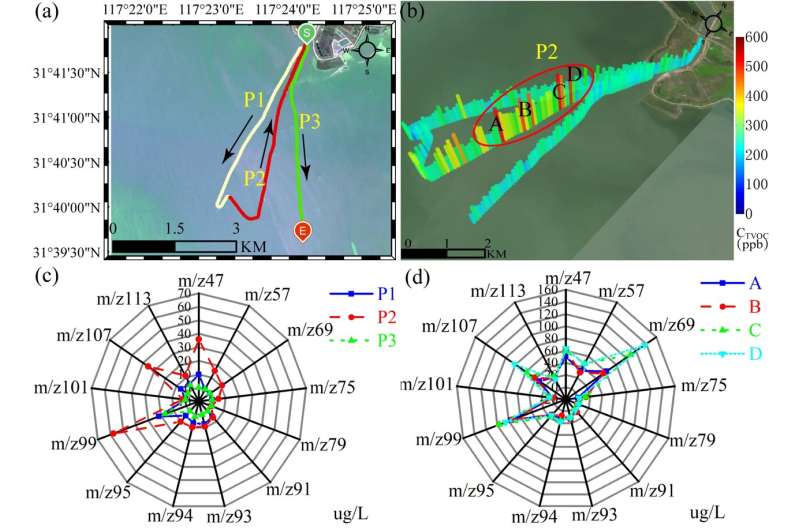This article has been reviewed according to Science X's editorial process and policies. Editors have highlighted the following attributes while ensuring the content's credibility:
fact-checked
peer-reviewed publication
trusted source
proofread
New system enables rapid monitoring of volatile organic compounds in water

To quickly obtain the spatiotemporal distribution images of volatile organic compounds (VOCs) in water, a research team led by Prof. Huang Ying from the Hefei Institutes of Physical Science of the Chinese Academy of Sciences developed a shipborne mass spectrometry system for monitoring VOCs in water. The results were published in the Journal of Cleaner Production.
VOCs in water not only affect microbial growth, but also contribute to air pollution and harm human health. Understanding the distribution of VOCs in water is critical to understanding pollution, managing water bodies, and improving the environment. However, traditional detection methods are time-consuming and cannot provide rapid insight into the spatial and temporal characteristics or emission sources of VOCs in water.
The shipborne system developed in this research can monitor VOCs in water. It mainly consists of a shipborne platform, a spray inlet system, a proton transfer reaction mass spectrometer, and geographic information software (GIS). During the navigation, VOCs in water can be quickly extracted to gaseous state by the SI system and transferred into the proton transfer reaction mass spectrometry (PTR-MS) for detection.

Additionally, the system can integrate their component and concentration information with geographic information system (GIS). It enables real time visualization of the spatial distribution of VOCs in water. In this way, it is possible to quickly visualize and trace the sources contributing to the distribution of VOCs in water.
In a field test, the researchers verified its potential application. The system can be installed on ships to conduct large-scale surveys of VOC distribution in water bodies and trace VOC emissions in rivers. It can also be installed at specific locations for real-time monitoring and early warning of VOCs in water, such as pipelines and rivers.
More information: Qu Liang et al, Imaging VOC distribution and tracing emission sources in surface water by a mobile shipborne spray inlet proton transfer reaction mass spectrometry, Journal of Cleaner Production (2023). DOI: 10.1016/j.jclepro.2023.137655
Journal information: Journal of Cleaner Production
Provided by Chinese Academy of Sciences


















